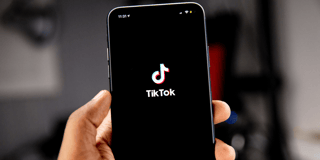Contributors
-
 Written by Ray Banks
Written by Ray BanksProduct Marketing Manager at Funnel. Ray has experience marketing in the U.S., Europe and Asia.
Smart marketers respect the importance of good data. But among all the tools that offer solutions for data management and analysis, it can be difficult to understand the roles that different types of tools play in a data stack. Let’s take a look at the differences between Funnel, a marketing data hub, and customer data platforms (or CDPs), to understand how they can both set you up for digital success.
What is the difference between Funnel and a CDP?
While a CDP helps you collect customer data by tracking behaviour on your website, app, and email campaigns, Funnel lets you connect to all of your marketing platforms to store and organize the data. In fact, Funnel actually offers connectors to some popular CDPs.
What do I need?
In order to understand if you would need a CDP, a marketing data hub, or both, start by mapping out the different use cases you have.
For example, take a look at the following examples:
1. Automate marketing reporting
Automating your marketing reporting removes the possibility of human error, saves you time, and helps you discover real-time insights. Unlike other areas of business, marketing uses reports to share results and as a way to experiment and improve outcomes. Every time you log into, for example, your Facebook ads account, you access reports to see what is working and what can be improved. The same goes for other advertising platforms.
When marketing reporting is automated, it also means that you combine data from multiple platforms. This helps you to track campaigns across platforms, countries, currencies, etc. Automation allows you to create dashboards that ensure you're always on top of your marketing.
The best tool for this: Funnel
2. Customer journey analysis
Customer journey analysis is the process of tracking and examining the path a customer takes, from initial awareness through various touch points to the final purchase and beyond. It's about understanding the customer's experience, identifying key interactions that lead to conversion, and pinpointing areas where customers might drop off or become disengaged. This analysis helps you optimize the customer experience and tailor strategies to improve conversion rates.
The best tool for this: CDP
3. Track customer acquisition costs
Tracking customer acquisition costs (CAC) is a crucial aspect of measuring the effectiveness of marketing efforts. It involves calculating the total cost spent on acquiring a new customer and helps you evaluate the return on investment for different marketing channels, adjust strategies accordingly, and better allocate budgets to lower costs over time.
The best tool for this: Funnel
4. Personalize marketing content
Personalizing marketing content is about delivering the right message to the right person at the right time. This strategy relies on data and insights about customer preferences, behaviors, and past interactions. Personalization can range from simple tactics like including a customer's name in an email to complex, dynamic content that changes based on a user's behavior or demographics. The aim is to make marketing communications more relevant and engaging, thereby increasing the chances of conversion.
Personalization can occur based on triggers. For example, if a customer abandons a shopping cart, it can trigger an email that sends them a coupon for the items in the cart. Similarly, if a customer frequently visits a particular product page, they can receive content that is relevant to that product.
The best tool for this: CDP
5. Track budgets and pacing
Budget tracking and pacing are key to managing the success of a digital marketing campaign. This involves monitoring current spend against budgets to ensure that campaigns stay on target while not overspending. It's fairly easy to do on most individual platforms to some degree, but it can quickly become complex — especially when you're advertising through multiple channels. Effectively allocating budgets over time, and identifying areas where spend adjustments are needed, can be a challenging and crucial task.
The best tool for this: Funnel
6. Build audiences
Building audiences involves identifying and segmenting potential customers based on specific criteria such as demographics, behavior, or purchase history. The purpose is to create groups of individuals who are most likely to respond positively to targeted marketing campaigns. Audience building is crucial for delivering tailored messaging that resonates with specific customer segments, ultimately leading to more effective marketing efforts and higher conversion rates.
The best tool for this: CDP
By mapping your objectives, it becomes clear which tool is most suited to help you reach them.
|
Funnel |
CDP |
|
|
Now, let's briefly take a step back to take in a broader perspective of each of these tools and compare how they differ from each other.
Funnel Overview
Funnel is a marketing data hub that connects data from all your marketing platforms, stores it, organizes it through automated data transformations, and can then share it with visualization tools, data warehouses and BI tools. It is especially useful for optimizing ad spend, automating reporting, and segmenting campaigns across platforms.
Key features:
- Integrates with hundreds of marketing and advertising platforms
- Data transformation capabilities
- Historical data and data storage
- Sharing of data to visualization tools and data warehouses
CDP Overview
CDPs are designed to create a unified customer database by pulling data from various sources. This enables companies to have a singular view of the customer. Consequently, businesses can then personalize content, product recommendations, marketing messages, and overall customer experiences across multiple touchpoints.
Key features:
- Profile unification, where it merges different data points related to a single customer into one unified profile
- Segmentation capabilities allowing marketers to create targeted lists or audiences
- Can sometimes integrate with or push data to other systems like marketing automation platforms or ad platforms for targeted campaigns
Comparison
Funnel is more focused on an overall view of marketing data from various platforms, improving marketing reporting and decision making. Meanwhile, CDPs are focused on creating a holistic view of each customer by integrating data from multiple touch points and enabling a personalized customer experience.
Use cases:
- Funnel is particularly useful for businesses running multiple ad campaigns across different platforms and wanting to aggregate that data for analysis.
- CDPs are valuable for businesses aiming to create a unified customer view and deliver personalized communication to them across channels.
- Both can integrate with other systems, although the nature of those systems might differ. Funnel might send data to a business intelligence tool or data warehouse, while a CDP might integrate with a marketing automation system to trigger personalized campaigns.
The choice between Funnel and a CDP depends on the specific needs of the business, and, in many cases, it could make sense to have both. If the primary need is to aggregate marketing data from various platforms, Funnel could be more appropriate. If there’s a need to understand and engage with customers on a more personalized level, a CDP would be more suitable.
|
Criteria |
CDP |
Funnel |
|
Need |
Integrate data tools for consistent communication strategies |
Consolidate data to gauge marketing efficacy |
|
Data pivot |
Rigid (user and account) |
Flexible (date, campaign) |
|
Data collection |
Tracking pixels, APIs |
APIs |
|
Data routing |
Real-time stream, bi-directional, batch |
Batch, directional |
|
Important capabilities |
Identity resolution, segmentation, connectors, personalization |
Data transformation, no-code accessibility, connectors |
|
Users |
Operations, web developers, marketers |
Marketers, business intelligence |
I hope this post helped you gain a better understanding of the uses and differences between the two. If you want to learn more about Funnel, just click the button below.
Disclaimer: The featured image for this article was created using generative AI.
Contributors
-
 Written by Ray Banks
Written by Ray BanksProduct Marketing Manager at Funnel. Ray has experience marketing in the U.S., Europe and Asia.



